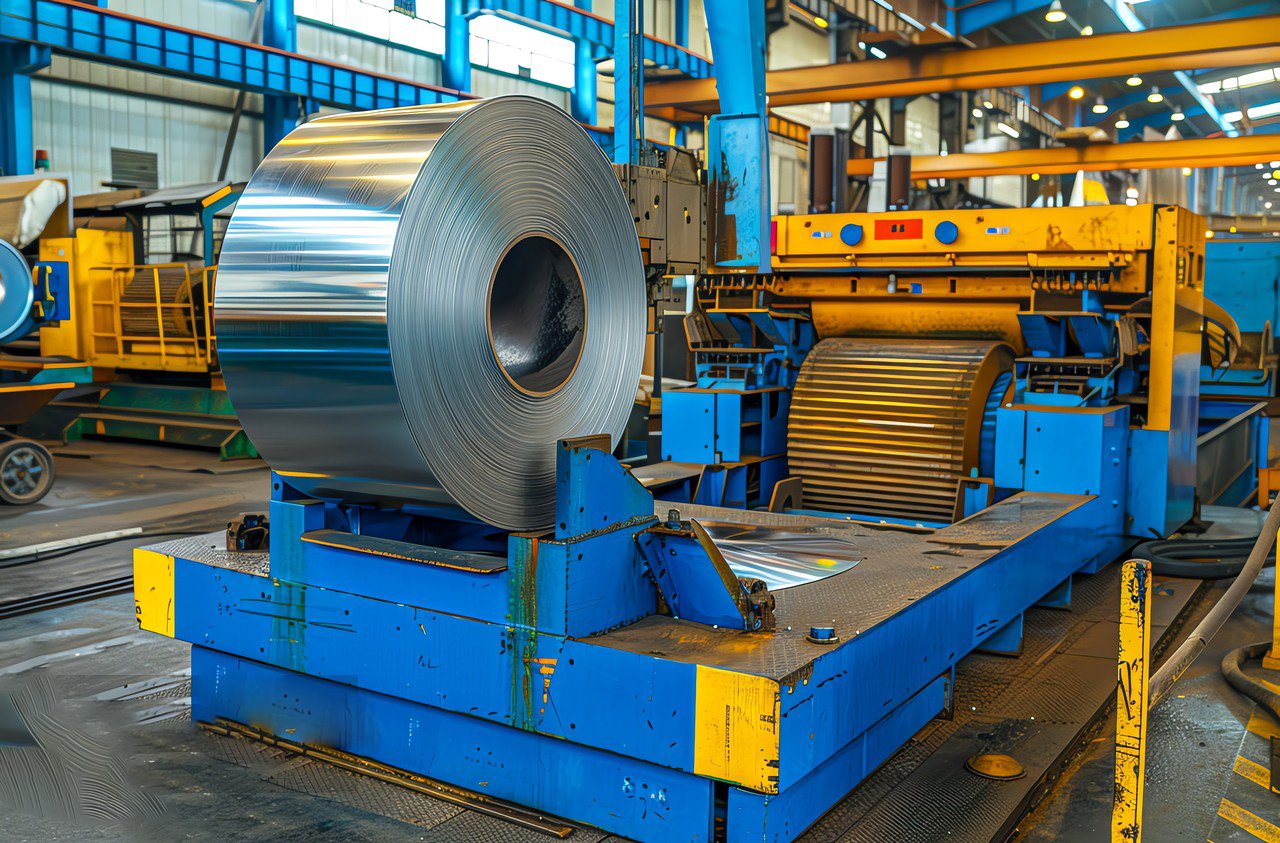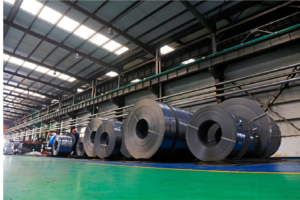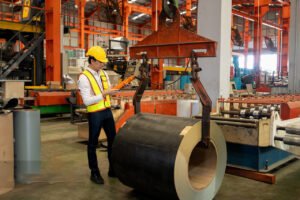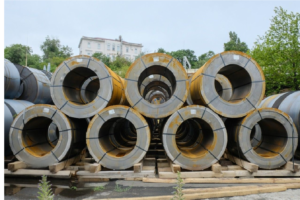Cold-Rolled 304 Coil Price Outlook for Q4 2025: An Insider's Guide
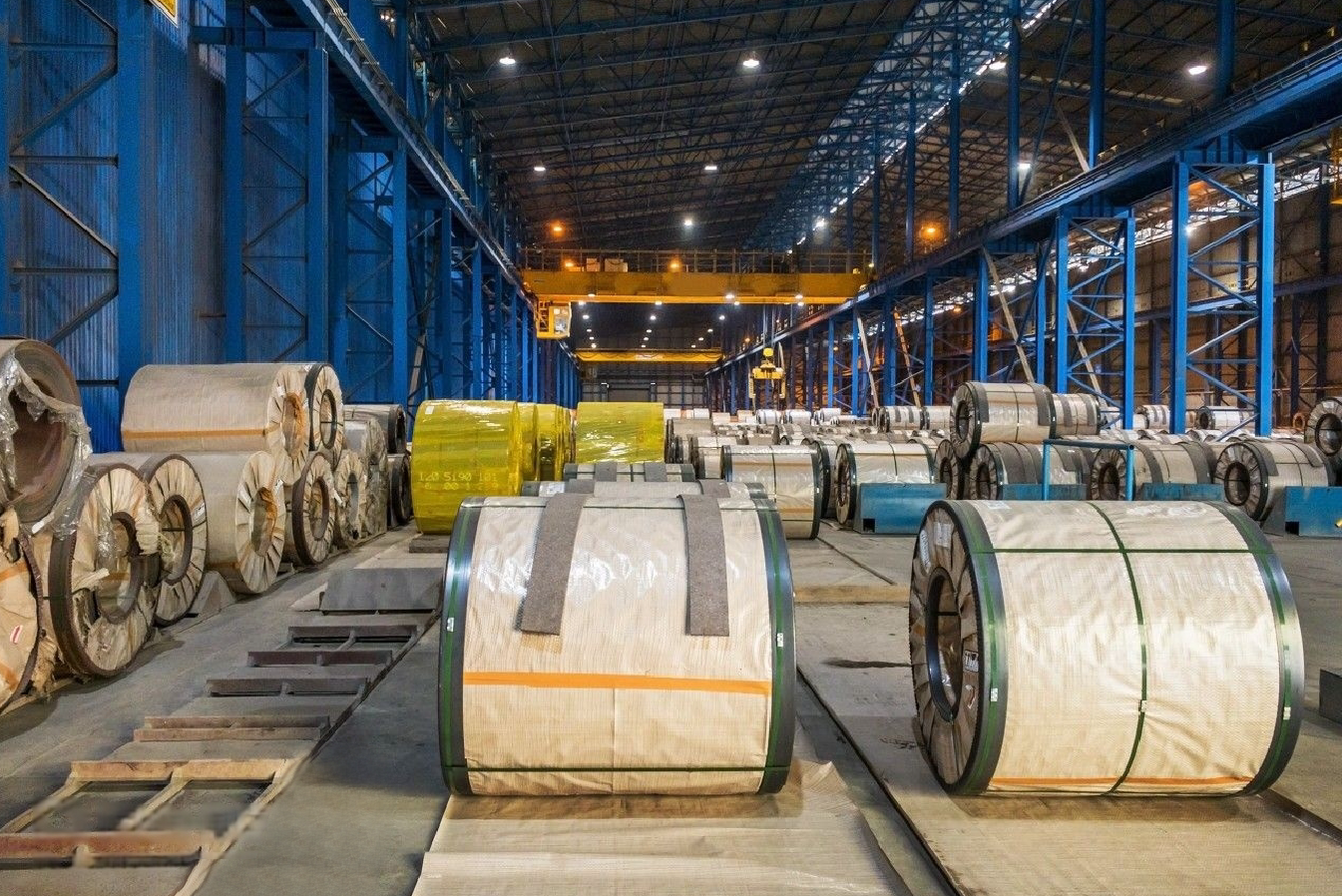
Navigating the stainless steel market feels like a constant battle against uncertainty, making accurate budgeting nearly impossible. This volatility can leave you fearing that you're either overpaying or risking production delays from stockouts. By understanding the core drivers for Q4 2025, you can regain control and plan with confidence.
The price of cold-rolled 304 stainless steel coil is primarily determined by raw material costs, especially nickel and chromium, alongside global industrial demand, energy prices, and logistical factors. Projections for Q4 2025 suggest continued volatility, driven by the green energy transition and evolving supply chain dynamics.
As the Global Business Director at MFY, I’ve had countless conversations with clients across India, Southeast Asia, and the Middle East who share these concerns. The key isn't to find a crystal ball, but to build a resilient procurement strategy based on solid market intelligence. In this article, we’ll move beyond headlines and delve into the fundamental factors that will shape the market, helping you make informed decisions.
This analysis is not just an academic exercise; it's a practical guide forged from experience. The stainless steel market is a complex ecosystem where macroeconomic trends intersect with industry-specific realities. For instance, while a global inflation report might suggest rising costs, a new government policy in a key nickel-producing nation1 could simultaneously exert downward pressure. At MFY, our integrated supply chain—from raw material trading to final processing and export—gives us a unique vantage point to observe these opposing forces. We believe that by moving from reactive purchasing to strategic procurement, our partners can not only survive but thrive in this environment. Let’s explore the trends, historical lessons, and future projections to build that strategic advantage together.
What are the current price trends for cold-rolled 304 coil?
Are you struggling to make sense of conflicting market reports on 304 coil prices? This confusion often leads to hesitation, resulting in missed buying opportunities or costly procurement mistakes. Let's cut through the noise and analyze the definitive trends that are shaping today's market landscape.
Current price trends for cold-rolled 304 coil exhibit moderate volatility, heavily influenced by fluctuating nickel values and distinct regional demand shifts. While a recent slight downtrend reflected stabilized raw material costs, resurgent demand in markets like Southeast Asia and India is now creating renewed upward pressure.
This push-and-pull dynamic is the new normal. The recent price stabilization we saw was a welcome breather, largely tied to the LME nickel price2 correcting after a period of speculative highs. However, that's only one part of the story. On the ground, I'm seeing a tangible shift. For example, a major construction contractor we work with in the Middle East has advanced their project timelines, significantly increasing their immediate need for 304 coils. This isn't an isolated case. Across various sectors, from automotive components in Russia to consumer appliances in India, underlying demand is firming up. This grassroots demand is beginning to challenge the macro-level stability of raw material prices, creating a tension that any savvy buyer must understand. It’s a classic battle between supply-side fundamentals and real-world consumption. Navigating this requires looking beyond the price index and understanding the specific industrial activities that fuel it. In the following sections, we will dissect these components in greater detail, exploring the primary cost drivers, regional consumption patterns, and the often-overlooked logistical factors that contribute to your final landed cost.
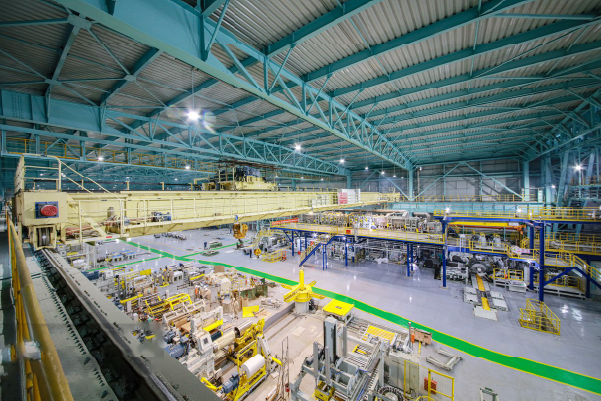
Understanding current price trends requires a multi-layered analysis that goes far beyond a simple price chart. It involves dissecting cost components, mapping regional demand, and accounting for operational overheads. For procurement managers, mastering these nuances is the key to anticipating market movements rather than just reacting to them. At MFY, we build our strategies around this deep-seated analysis, ensuring our clients are always a step ahead.
The Overwhelming Influence of Raw Material Costs
The cost of a 304 stainless steel coil is fundamentally tied to the price of its key alloying elements: nickel and chromium. Nickel, which constitutes about 8% of 304's composition, is the most significant and volatile component. Its price, traded on the London Metal Exchange (LME), is a daily barometer for the entire stainless steel industry. In the first half of this year, we witnessed LME nickel prices fluctuate by as much as 15% due to a combination of speculative trading and changing supply forecasts from Indonesia, the world's largest producer. A simple rule of thumb I share with my clients is that a sustained $1,000/ton change in the nickel price can impact the final 304 coil price by approximately $80/ton. This direct correlation makes monitoring the nickel market non-negotiable for anyone serious about steel procurement.
Chromium, the other critical element, has historically been more stable. However, recent energy price spikes in major producing regions like South Africa have introduced new volatility into its cost structure. Ferrochrome production is an incredibly energy-intensive process, and rising electricity tariffs there translate directly into higher chromium costs. While its impact is less dramatic than nickel's, it has become an increasingly important factor to watch, contributing to a higher baseline cost for all austenitic stainless steels.
Finally, the cost of iron ore and steel scrap provides the floor for the base price. While these inputs are more commoditized, their price levels are dictated by global steel demand, particularly from the construction and manufacturing sectors in China and other major economies. A surge in general carbon steel demand can pull scrap prices up, creating a ripple effect that adds a few extra percentage points to the cost of stainless production. Understanding this complete cost stack—nickel, chromium, and the ferrous base—is the first step toward demystifying the final price you pay.
Regional Demand Dynamics: A Tale of Contrasting Markets
Global demand for 304 coil is not monolithic; it's a patchwork of diverse regional stories. In mature markets like Europe, demand has been relatively subdued, impacted by sluggish economic growth and high energy costs that have dampened manufacturing output. Procurement in these regions has been more cautious, focusing on maintaining lean inventories. The sentiment I hear from my European contacts is one of "watchful waiting," with purchasing decisions closely tied to short-term project needs rather than long-term strategic stock building.
In stark contrast, emerging markets are telling a very different story. In India, massive government investment in infrastructure—from new airports to expanded rail networks—is fueling robust demand for stainless steel. A distributor client of ours in Mumbai recently told me their sales for architectural applications have grown 30% year-over-year. Similarly, in Southeast Asia, the burgeoning manufacturing sector, especially in automotive and electronics, is creating sustained demand. A Vietnamese client who produces kitchen equipment has doubled their quarterly order of 304 coils from MFY to keep pace with both domestic consumption and export orders.
This divergence is critical. While a headline might report weak global demand based on European data, the reality for a supplier like MFY, with a strong presence in Asia and the Middle East, is one of dynamic growth. For buyers, this means that the price you are quoted can be heavily influenced by your supplier's primary markets. A supplier focused on a slow-growth region may offer competitive spot prices to move inventory, while one serving high-growth markets might have less flexibility. This is why understanding your supplier’s business focus is as important as understanding the market itself.
The Understated Role of Energy, Logistics, and Conversion Costs
Beyond raw materials and demand, a series of operational factors add significant and often unpredictable costs. The energy required for the cold-rolling process is a major component. Cold rolling, which gives the coil its smooth finish and precise thickness, is energy-intensive. As we’ve seen globally, energy price volatility can directly impact conversion costs—the price a mill charges to process a hot-rolled band into a cold-rolled coil. A sudden spike in natural gas or electricity prices can add a conversion surcharge with little warning.
Logistics are another critical wildcard. As a company that exports globally, we at MFY manage these complexities daily. Ocean freight rates, which soared during the pandemic, have since moderated but remain sensitive to geopolitical events. The disruptions in the Red Sea, for instance, forced carriers to reroute vessels around Africa, adding 10-14 days to transit times and imposing significant surcharges. These costs are ultimately passed down the supply chain. A procurement manager in Dubai might see a quote for Chinese 304 coil jump overnight not because of nickel, but because of a new war risk insurance premium on shipping routes.
Furthermore, domestic logistics within the producing country, from the mill to the port, and within the destination country, from the port to the buyer's facility, add another layer of cost. At MFY, our integrated logistics and warehousing network allows us to consolidate shipments and optimize routes, which helps shield our clients from some of this volatility. However, it’s a constant battle, and smart buyers should always factor in a buffer for logistical surprises when calculating their Total Cost of Ownership.
Nickel prices affect 304 coil costsTrue
Nickel constitutes about 8% of 304 stainless steel composition and its price fluctuations directly impact final coil prices.
European demand is currently strongFalse
European demand has been subdued due to sluggish economic growth and high energy costs, unlike the robust demand in emerging markets.
How have historical factors influenced the price of cold-rolled 304 coil?
Does the stainless steel market feel completely unpredictable, making long-term planning seem like a futile exercise? Without understanding the patterns of the past, you are bound to repeat costly procurement mistakes. By examining key historical events, we can uncover a valuable roadmap that informs a smarter future strategy.
Historically, the price of cold-rolled 304 coil has been profoundly influenced by major economic cycles, significant geopolitical events, and transformative technological shifts in steel production. The 2008 financial crisis, China's industrial expansion, and recent pandemic-related supply chain disruptions serve as powerful examples of these historical drivers.
There's an old saying in the markets: "History doesn't repeat itself, but it often rhymes." I was in a junior role during the 2008 financial crisis, and I remember the panic as demand evaporated overnight. But more importantly, I remember the lessons learned during the recovery that followed—lessons about resilience, diversification, and the dangers of assuming stability. Those past shocks provided a blueprint for how to navigate the even greater disruption of the COVID-19 pandemic. Each major event, from a trade war to a technological breakthrough, leaves an imprint on the market's structure and behavior. Understanding this historical context is not an academic pursuit; it is the foundation of strategic foresight. It allows us to distinguish a temporary price blip from a fundamental market shift. In the analysis that follows, we will journey through some of these defining moments and extract the timeless principles that can guide your procurement strategy for Q4 2025 and beyond.

To forecast the future, we must first understand the past. The price of 304 stainless steel coil did not begin its journey in a vacuum; it has been molded by decades of economic booms and busts, political realignments, and technological progress. By dissecting these historical pivot points, we can identify recurring themes and underlying structures that continue to influence the market today. This historical perspective is crucial for building the kind of robust, long-term procurement strategy that we champion at MFY.
The Great Acceleration: China's Industrialization and the Post-2008 Boom
The single most significant historical factor shaping the modern stainless steel market was China's rapid industrialization3, which went into overdrive following the 2008 global financial crisis. As Western economies contracted, the Chinese government unleashed a massive stimulus package focused on infrastructure: high-speed rail, sprawling new cities, and an unprecedented expansion of manufacturing capacity. This created a near-insatiable appetite for all industrial metals, especially stainless steel. According to data from the World Steel Association, China's stainless steel production grew from around 9 million metric tons in 2009 to over 30 million metric tons by the end of the next decade, accounting for over half of the world's total output.
This boom fundamentally reset the global price floor for 304 coil. It transformed China from a net importer to the world's dominant exporter, establishing a new global supply-demand equilibrium. I remember working with manufacturing clients in Southeast Asia during that period who were rapidly shifting their sourcing from traditional European mills to Chinese producers like us at MFY. The combination of scale, modern technology, and an integrated supply chain gave Chinese mills a structural cost advantage. This era cemented the importance of tracking Chinese economic data—from PMI manufacturing indices to property development stats—as a leading indicator for global stainless steel pricing.
The legacy of this period is a market with enormous production capacity concentrated in one region, making it highly sensitive to Chinese domestic policy. When China's economy is strong, it consumes a vast amount of its own production, tightening global supply and pushing up prices. When its domestic demand softens, that excess capacity floods the international market, putting downward pressure on prices. This dynamic, born from the post-2008 boom, remains the central drama of the stainless steel market today.
The Era of Disrupted Trade: Tariffs and Protectionism
The late 2010s ushered in a new era defined by trade friction and protectionism4, which significantly rerouted global stainless steel flows. The most prominent example was the imposition of Section 232 tariffs by the United States in 2018, which placed a 25% tariff on steel imports from many countries. This was followed by a series of anti-dumping and countervailing duties (AD/CVD) in both the U.S. and the European Union, often targeting specific Asian producers. These measures were designed to protect domestic steel industries but had far-reaching consequences for the global market.
For buyers, these tariffs created immense uncertainty and complexity. Suddenly, the lowest-priced supplier was not necessarily the most cost-effective once tariffs were factored in. I recall a client, a large equipment integrator in the U.S., who had a long-standing relationship with a Chinese mill. Overnight, their landed cost for 304 coil increased by over 20%. This forced a frantic search for alternative supply chains. At MFY, we had to become experts in navigating this new landscape, helping clients find compliant and cost-effective solutions, sometimes by leveraging our production facilities or those of our partners in countries not subject to the highest tariffs, like Vietnam or Malaysia.
This period taught the market a crucial lesson in supply chain diversification. The risk of being dependent on a single country of origin became glaringly apparent. It accelerated the "China+1" sourcing strategy, where companies would maintain their core supply from China while developing a secondary supplier in another region as a hedge against geopolitical risk. This has created a more fragmented but potentially more resilient global supply network. The legacy of this protectionist era is that procurement managers must now be not only price analysts but also amateur geopoliticians, constantly monitoring trade policy shifts that could upend their sourcing strategies.
The Ultimate Stress Test: The COVID-19 Pandemic and Its Aftermath
No historical event stress-tested the global supply chain for stainless steel more than the COVID-19 pandemic5. The initial phase in early 2020 saw a collapse in demand as lockdowns brought global industry to a standstill. Prices for 304 coil plummeted. However, this was quickly followed by an unprecedented "whiplash effect." As people were confined to their homes, consumer spending shifted dramatically from services (like travel and dining) to goods (like new kitchen appliances, electronics, and home renovations)—all of which are intensive users of stainless steel.
This demand surge collided head-on with a crippled supply side. Mills faced labor shortages and lockdown-induced shutdowns. More critically, the global logistics network seized up. Container shortages, port congestion, and soaring freight rates created a nightmare for exporters like us and importers alike. At one point in 2021, the cost of shipping a container from Asia to Europe increased tenfold. This created a situation where the price of 304 coil was dictated less by nickel and more by whether you could even secure a vessel to ship it. A client in the Middle East once told me, "Cosmos, I don't care about the price anymore, just tell me you can get it here."
The key takeaway from the pandemic was the paramount importance of supply chain visibility and resilience. Companies with strong supplier relationships, like the partnerships we foster at MFY, were better able to secure production slots and navigate logistical bottlenecks. It also exposed the fragility of "Just-in-Time" inventory models, prompting a shift toward holding more strategic "Just-in-Case" safety stock. The pandemic permanently elevated logistics and supply chain reliability from a secondary consideration to a primary factor in any strategic procurement decision.
China's industrialization impacted 304 coil pricesTrue
China's post-2008 infrastructure boom created massive demand for stainless steel, resetting global price floors and making Chinese economic data a key pricing indicator.
Trade tariffs simplified global steel sourcingFalse
2018 Section 232 tariffs created sourcing complexity, forcing buyers to develop "China+1" strategies and monitor geopolitical risks constantly.
What factors are projected to impact the price of cold-rolled 304 coil in Q4 2025?
Attempting to plan your procurement for Q4 2025 can feel like gazing into a cloudy crystal ball. This deep uncertainty can paralyze your decision-making, potentially locking you into unfavorable contracts or leaving you exposed. Let's identify the most probable market-moving factors to build a proactive and informed strategy.
Projections for Q4 2025 indicate the price of cold-rolled 304 coil will be shaped by the pace of global economic recovery, policies driving the green energy transition, and evolving raw material supply dynamics, especially nickel production from Indonesia. Geopolitical stability will also remain a significant wildcard.
Moving from analyzing the past to projecting the future requires a shift in focus. While historical precedents provide a valuable guide, Q4 2025 will be defined by a unique confluence of emerging trends. The most significant of these is arguably the global green energy transition. This isn't just an environmental headline; it represents a fundamental, structural shift in demand for materials like 304 stainless steel. At the same time, the supply side of our most critical raw material, nickel, is undergoing its own transformation, largely dictated by policy decisions being made in Jakarta. As I discuss future needs with our clients, from EV battery component manufacturers to solar farm developers, these two topics dominate the conversation. Understanding their interplay is no longer optional; it's essential for anyone looking to secure a competitive edge in the coming years. Let’s break down these future-facing variables into actionable insights.
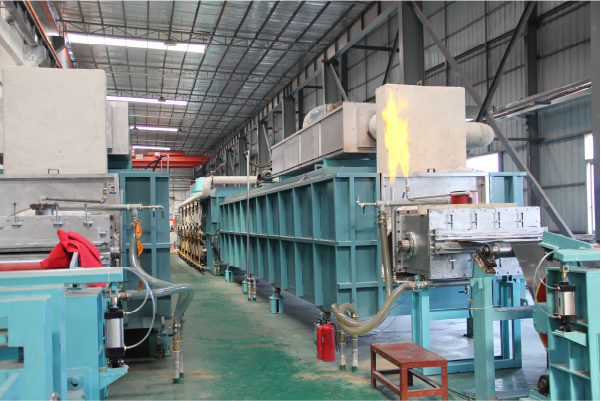
Looking ahead to the fourth quarter of 2025 requires a forward-looking analysis that balances known trends with potential disruptors. The price of 304 coil will be determined by a complex interplay of new demand drivers, evolving supply chain structures, and the persistent influence of macroeconomic policies. For procurement leaders, the challenge is to build a strategy that is robust enough to withstand this uncertainty. At MFY, our entire innovation and development focus is on helping our clients prepare for this future landscape.
The Green Revolution's Insatiable Appetite for Stainless Steel
The single largest new demand driver for 304 stainless steel heading into 2025 is the global transition to green energy. This is not a cyclical trend but a structural one that will redefine the market for decades. The corrosion resistance, durability, and recyclability of stainless steel make it an indispensable material for a wide range of green technologies. For example, the frames and mounting structures for large-scale solar farms are increasingly specified in stainless steel to ensure a 25-30 year lifespan, especially in harsh coastal or desert environments. Similarly, components within wind turbines and geothermal plants rely on the material's strength and resistance to extreme conditions.
Perhaps the most significant growth vector is the electric vehicle (EV) and battery energy storage system (BESS) sector. Stainless steel is used extensively in battery enclosures, cooling systems, and charging infrastructure. According to a recent report by the Nickel Institute, demand for nickel from the battery sector is projected to increase by over 250% between 2022 and 2030. While not all of this is for 304-grade steel, the sheer scale of this new demand creates significant upward pressure on the entire nickel market, directly impacting 304 coil prices.
I recently worked with a new client in Southeast Asia that specializes in manufacturing BESS units for industrial use. Their projected need for 304 stainless steel in 2025 is five times what it was in 2022. This story is being replicated globally. This sustained, policy-driven demand from the green sector will create a higher price floor for 304 coil, making the sub-$2,000/ton prices of the past seem like a distant memory. Procurement managers must now factor this new, powerful demand source into their long-term forecasts.
The Indonesian Question: Nickel Supply Dynamics
While demand is being reshaped by the green transition, the supply side of the equation for Q4 2025 will be largely determined by one country: Indonesia. Over the past decade, Indonesia has risen to become the undisputed titan of global nickel production, accounting for over half of the world's supply. This dominance gives its government's policies an outsized impact on the global price of stainless steel. The key policy has been the ban on exporting unprocessed nickel ore, designed to force investment in domestic refining and processing facilities, thereby capturing more value within the country.
This policy has led to a massive build-out of smelters producing nickel pig iron (NPI) and, more recently, high-grade nickel matte suitable for both stainless steel and batteries. By Q4 2025, the market will be watching closely to see if this expanded capacity can keep pace with rising global demand. Any production disruptions, whether due to technical issues, labor disputes, or new environmental regulations in Indonesia, could send shockwaves through the nickel market. Furthermore, the Indonesian government has openly discussed the idea of forming a nickel cartel, similar to OPEC for oil, to better control prices. While this has yet to materialize, the mere possibility introduces a significant geopolitical risk premium into the price.
As a major buyer of raw materials, MFY maintains a dedicated team that monitors the Indonesian market minute-by-minute. We cultivate relationships with multiple producers there to ensure supply security for our clients. For any buyer of 304 coil, understanding the political and operational landscape in Indonesia is no longer a niche concern; it is a central pillar of risk management. The future price of your stainless steel will be decided as much in Jakarta as it is on the floor of the LME.
Macroeconomic Headwinds and Geopolitical Wildcards
Beyond the specific dynamics of steel and nickel, the broader macroeconomic environment will set the stage for Q4 2025. The interest rate policies of central banks like the U.S. Federal Reserve and the European Central Bank will be a critical factor. A sustained high-interest-rate environment can cool economic activity, reducing investment in construction and manufacturing, thereby softening demand for stainless steel. Conversely, if inflation is tamed and central banks begin to lower rates, it could spur a new cycle of investment and boost demand.
Geopolitical stability remains the ultimate wildcard. The ongoing conflict in Ukraine continues to impact energy prices and disrupt trade flows in Europe. Any escalation or new conflict in a critical region—be it the Middle East or the South China Sea—could instantly trigger logistical chaos and price spikes. Trade relations between major economic blocs, particularly the U.S., EU, and China, will also be a key factor to watch. The potential for new tariffs or trade barriers could once again force a rapid realignment of global supply chains, as we saw in the late 2010s.
In my discussions with clients, I emphasize the need for agility. In such an uncertain environment, being locked into a rigid, long-term procurement plan can be a liability. The key is to build a flexible strategy that can adapt. This involves diversifying suppliers, maintaining strategic inventory buffers, and working with partners like MFY who have the global footprint and market intelligence to help you navigate these turbulent waters. The successful procurement manager of 2025 will be the one who balances long-term strategic planning with the tactical agility to respond to these inevitable shocks.
Green energy increases 304 steel demandTrue
The article clearly states that solar, wind, and EV sectors are creating structural demand growth for 304 stainless steel due to its durability and corrosion resistance.
Indonesia controls half of nickel supplyTrue
The text explicitly mentions Indonesia accounts for over 50% of global nickel production, making it a dominant force in raw material supply for stainless steel.
What measures can buyers consider in response to the expected price fluctuations?
Knowing that price volatility is coming is one thing; preparing for it is another. Simply reacting to market swings as they happen will consistently leave your budgets broken and your profit margins threatened. By proactively implementing a few strategic measures, you can transform volatility from an unmanageable threat into a calculated risk.
To effectively counter expected price fluctuations in 304 coil, buyers should actively consider diversifying their supplier base across different regions, exploring financial hedging strategies through forward contracts, and strategically optimizing their inventory levels. Maintaining a flexible procurement plan that can adapt to short-term market changes is crucial.
Several years ago, I started working with a large manufacturing company in India6 that was a textbook case of concentration risk. They sourced nearly 90% of their 304 coil from a single mill in a single country. When that country imposed a sudden export tax, my client’s production line was within weeks of shutting down due to a supply cutoff. The scramble to find an alternative was incredibly disruptive and expensive. This experience was a harsh but valuable lesson for them. Together, we worked to rebuild their sourcing strategy from the ground up, focusing on resilience rather than just the lowest initial price. Their story is a powerful reminder that the measures we take before a crisis are what truly define our ability to weather it. The strategies we'll discuss below are not just theoretical concepts; they are practical, field-tested actions that can insulate your business from the inevitable shocks of the market.
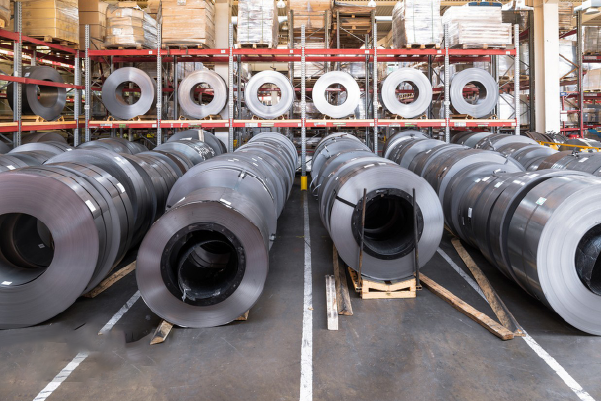
In a market defined by volatility, a passive procurement strategy is a recipe for failure. The alternative is to adopt a proactive stance, implementing a series of measures designed to mitigate risk and create flexibility. These measures are not about trying to perfectly time the market, but about building a resilient framework that can absorb price shocks and ensure operational continuity. At MFY, we see ourselves as partners in this process, helping our clients design and execute these vital strategies.
The Power of Diversification: Beyond a Single Source
The single most effective measure a buyer can take is to diversify their supplier base. Relying on one supplier or one country of origin, even if they offer the best price today, creates a critical vulnerability. This is the "all your eggs in one basket" problem. A geopolitical event, a natural disaster, a major factory fire, or a sudden change in trade policy—as my Indian client7 discovered—can instantly cut off your supply or cause prices to skyrocket. A diversified sourcing strategy mitigates these risks by spreading them across different geographies and companies.
Implementing this involves creating a portfolio of suppliers. For instance, a buyer might maintain a primary relationship with a large-scale, cost-effective producer in China, like MFY, for the bulk of their volume. Simultaneously, they could qualify and maintain smaller, secondary relationships with suppliers in other regions, such as Vietnam, Malaysia, or even Turkey. While these secondary suppliers might have a slightly higher base price, they provide an essential backup. In the event of a disruption with the primary source, production can be shifted to the secondary supplier, ensuring continuity.
Building this diversified base takes time and effort. It involves auditing and qualifying new suppliers, negotiating contracts, and managing more complex logistics. However, the cost of this effort is an insurance premium against a catastrophic supply chain failure. As a company with a global network, we often help our clients with this process. We can leverage our presence in Southeast Asia and other regions to help clients connect with reliable alternative partners, building a sourcing matrix that is both cost-effective and highly resilient.
Financial Tools and Contractual Safeguards
Beyond physical diversification, buyers can use financial and contractual tools to manage price risk. For companies with predictable, long-term demand, entering into fixed-price contracts for a portion of their required volume can be a powerful strategy. This involves agreeing on a price with a supplier for a set tonnage to be delivered over a specified period, for example, six or twelve months. This effectively locks in the material cost for that portion of their business, making budgeting more predictable and protecting margins from unexpected price spikes.
For example, a construction contractor we work with in the Middle East[^8] was recently awarded a two-year project requiring a large, steady supply of 304 coil. We worked with them to structure a fixed-price agreement for about 70% of their projected need. This gave them cost certainty for the bulk of their material, while they retained the flexibility to purchase the remaining 30% on the spot market, allowing them to benefit from any potential price dips. This hybrid approach often provides the best of both worlds: security and opportunity.
Other financial tools include hedging on commodity exchanges, though this is typically more suitable for very large consumers or trading houses. For most manufacturing or construction companies, simpler contractual mechanisms are more practical. These can include setting price caps and collars in agreements, where the price can float within an agreed-upon range but not exceed a certain ceiling or fall below a specific floor. The key is to have open conversations with your supplier partner to explore which contractual structures best align with your risk appetite and business model.
Smart Inventory Management: The 'Just-in-Case' Philosophy
The pandemic exposed the fatal flaw in lean, "Just-in-Time" (JIT) inventory models when applied universally in a volatile world. While JIT is excellent for minimizing carrying costs in a stable environment, it leaves no buffer for supply chain disruptions. The modern, more resilient approach is a hybrid model that I call "Strategic Buffering" or "Just-in-Case." This doesn't mean returning to the days of massive, inefficient warehouses full of inventory. Instead, it involves a more intelligent and targeted approach.
This strategy involves identifying the most critical materials—those whose absence would halt production—and maintaining a strategic safety stock of them. For a manufacturer of kitchen sinks, this would be their primary grade and thickness of 304 coil. They might decide to hold an extra four to six weeks of this specific material as a buffer against shipping delays or sudden supply shortages. For less critical or more readily available materials, a leaner inventory model can still be applied.
This is where a strong supplier partnership becomes invaluable. At MFY, our extensive warehousing capabilities allow us to offer solutions that support this strategy. We can hold dedicated stock for our key clients at our facilities, ready to be shipped on short notice. This allows our clients to benefit from having a safety buffer without having to bear the full cost and complexity of storing it on their own premises. It's a collaborative approach to inventory management that shares the risk and enhances the resilience of the entire supply chain.
| Measure | Description | Best For | Key Benefit |
|---|---|---|---|
| Supplier Diversification | Creating a portfolio of qualified suppliers from different geographic regions. | All buyers, especially those with high volume or critical dependence on steel. | Mitigates geopolitical, logistical, and single-source failure risks. |
| Fixed-Price Contracts | Agreeing on a set price for a specific volume over a defined period (e.g., 6-12 months). | Buyers with predictable, long-term demand (e.g., large projects, stable production). | Provides budget certainty and protects against price spikes. |
| Strategic Inventory | Holding a "Just-in-Case" buffer stock of the most critical materials. | Manufacturing and construction companies where stockouts cause major disruption. | Ensures operational continuity during supply chain delays or shortages. |
Diversification reduces supply chain riskTrue
Having multiple suppliers across different regions protects against disruptions from any single source.
Fixed-price contracts eliminate all riskFalse
While fixed-price contracts provide budget certainty, they don't eliminate risk entirely as market prices could fall below the contracted rate.
What are the best practices for procurement in the face of predicted price changes?
Is your procurement process still stuck in a reactive cycle of chasing quotes and placing orders? In today's market, that approach leaves money on the table and exposes your company to significant supply chain risks. Adopting modern best practices can transform your procurement function from a simple cost center into a powerful strategic advantage.
Best practices for stainless steel procurement amid price uncertainty include establishing deep supplier partnerships for superior market intelligence, leveraging data analytics for improved demand forecasting, and implementing a Total Cost of Ownership (TCO) model. This shifts the focus from securing the lowest unit price to achieving the best long-term value.
Procurement is no longer just about buying things. The most successful procurement professionals I work with today act more like intelligence analysts and risk managers than traditional buyers. They understand that the information they gather and the relationships they build are far more valuable than a slightly cheaper quote on a single order. They have moved beyond the simple transactional mindset to embrace a more holistic, strategic approach. This evolution is critical because the challenges we face—from volatile commodity prices to complex global logistics—cannot be solved with an outdated playbook. The best practices we will explore are built on three pillars: partnership, data, and a holistic view of cost. Mastering these will not only help you navigate the price changes of Q4 2_025 but will also build a more competitive and resilient business for the long term.

In an environment of constant change, excellence in procurement is defined by agility, intelligence, and a strategic mindset. Best practices are not about rigid rules but about cultivating capabilities that allow your organization to adapt and thrive. It's about shifting the procurement function's role from a tactical order-placer to a strategic value-creator. At MFY, we have built our entire client service model around supporting and enabling these best practices, believing that our success is intrinsically linked to our clients' procurement excellence6.
From Transaction to Partnership: The Power of Relationships
The old model of procurement often involved pitting suppliers against each other in a constant battle for the lowest price. This adversarial approach is fundamentally flawed in a volatile market. The best practice today is to cultivate deep, collaborative partnerships with a select group of strategic suppliers. This goes far beyond negotiating prices; it involves building a relationship based on trust, transparency, and shared goals. When you have a true partnership, you gain access to a supplier's most valuable asset: their market intelligence.
At MFY, my role as Global Business Director is centered on building these very partnerships. When a client treats us as a partner, they share their demand forecasts, their new product development plans, and their strategic challenges. In return, we provide them with early warnings about market shifts, insights into raw material trends, and proactive advice on navigating logistical challenges. For example, if our team sees signs of tightening nickel supply, we can call a partner client and suggest they secure their next quarter's volume ahead of the anticipated price increase7. This kind of proactive collaboration is impossible in a purely transactional relationship.
Building this partnership requires a commitment from both sides. It means regular communication, joint business planning sessions, and a willingness to work together to solve problems. It might mean not always choosing the absolute rock-bottom price on a given day in exchange for the long-term value of reliability, quality, and invaluable market insight. A strong supplier partner is your eyes and ears in the market, providing a critical competitive advantage that no spreadsheet can capture.
Embracing Data: The Shift to Total Cost of Ownership (TCO)
The most common mistake in procurement is focusing solely on the purchase price per ton. A truly strategic approach utilizes a Total Cost of Ownership (TCO) model. TCO is a framework that calculates the full, end-to-end cost of a purchase, not just the initial price tag. It accounts for all direct and indirect costs, including freight and logistics, insurance, import duties, inventory carrying costs, the cost of quality (i.e., rejection rates or material defects), and the cost of delays or stockouts.
Implementing a TCO model requires data. Best-in-class procurement teams leverage technology to track these variables. This can range from sophisticated ERP systems to simpler, well-designed spreadsheets. The goal is to compare potential suppliers on a true "apples-to-apples" basis. For instance, Supplier A might offer a 304 coil at $2,200/ton, while Supplier B (like MFY) offers it at $2,250/ton. A traditional buyer would choose Supplier A. However, a TCO analysis might reveal that Supplier A has a longer, less reliable delivery time, leading to higher inventory carrying costs and a risk of production delays. MFY, with its integrated supply chain and rapid export delivery, might ensure the material arrives exactly when needed, resulting in a lower TCO despite the higher initial price.
This data-driven approach removes emotion and guesswork from decision-making. It provides a quantifiable justification for choosing a more reliable, higher-quality supplier. As part of our commitment to digital innovation, we work with our clients to provide the transparent data they need—on shipping status, production timelines, and quality control—to accurately calculate their TCO and make the smartest financial decision for their business.
Organizational Synergy: The Cross-Functional Procurement Team
Finally, a best practice that is often overlooked is breaking down internal silos. Procurement cannot operate effectively in isolation. To be truly strategic, the procurement team must be deeply integrated with other key functions within the organization, particularly engineering, finance, and sales. This cross-functional collaboration ensures that purchasing decisions are aligned with the company's broader objectives.
For example, procurement should work with engineering to understand material specifications. Is the specified grade of 304 truly necessary, or could a different, more cost-effective grade work for a particular application? This is a conversation we facilitate frequently. I recently connected our technical team with a client's engineering department, and together they determined that for a non-critical, interior component, a lower-nickel stainless grade would perform just as well as 304, saving the client nearly 15% on that part.
Similarly, collaboration with the finance team is essential for managing budgets and executing hedging strategies. And working with the sales and marketing teams provides procurement with better demand forecasts, allowing for more accurate and timely purchasing. When procurement, engineering, finance, and sales are all aligned, the company can move as one cohesive unit, responding to market opportunities and threats with speed and intelligence. This organizational synergy is the ultimate hallmark of a world-class procurement function.
TCO includes inventory carrying costsTrue
Total Cost of Ownership accounts for all direct and indirect costs including inventory storage expenses.
Supplier partnerships reduce market intelligenceFalse
Deep supplier partnerships actually enhance market intelligence sharing, contrary to this claim.
Conclusion
Navigating the 304 coil market in Q4 2025 demands a strategic shift. Success will not come from reacting to volatile prices, but from proactively implementing measures like diversification and embracing best practices such as TCO analysis and deep supplier partnerships to build resilience and secure competitive advantage.
-
Explore government policies affecting nickel production and pricing ↩
-
Learn about LME's influence on global nickel pricing ↩
-
Understand the effects of China's industrialization on stainless steel demand and pricing ↩
-
Learn how tariffs and protectionist policies have reshaped global stainless steel trade ↩
-
Assess the pandemic's impact on supply chain dynamics and 304 coil prices ↩
-
Explore how strategic procurement practices drive organizational growth. ↩ ↩
-
Understand the factors that cause price fluctuations in nickel and stainless steel. ↩ ↩
Have Questions or Need More Information?
Get in touch with us for personalized assistance and expert advice.
